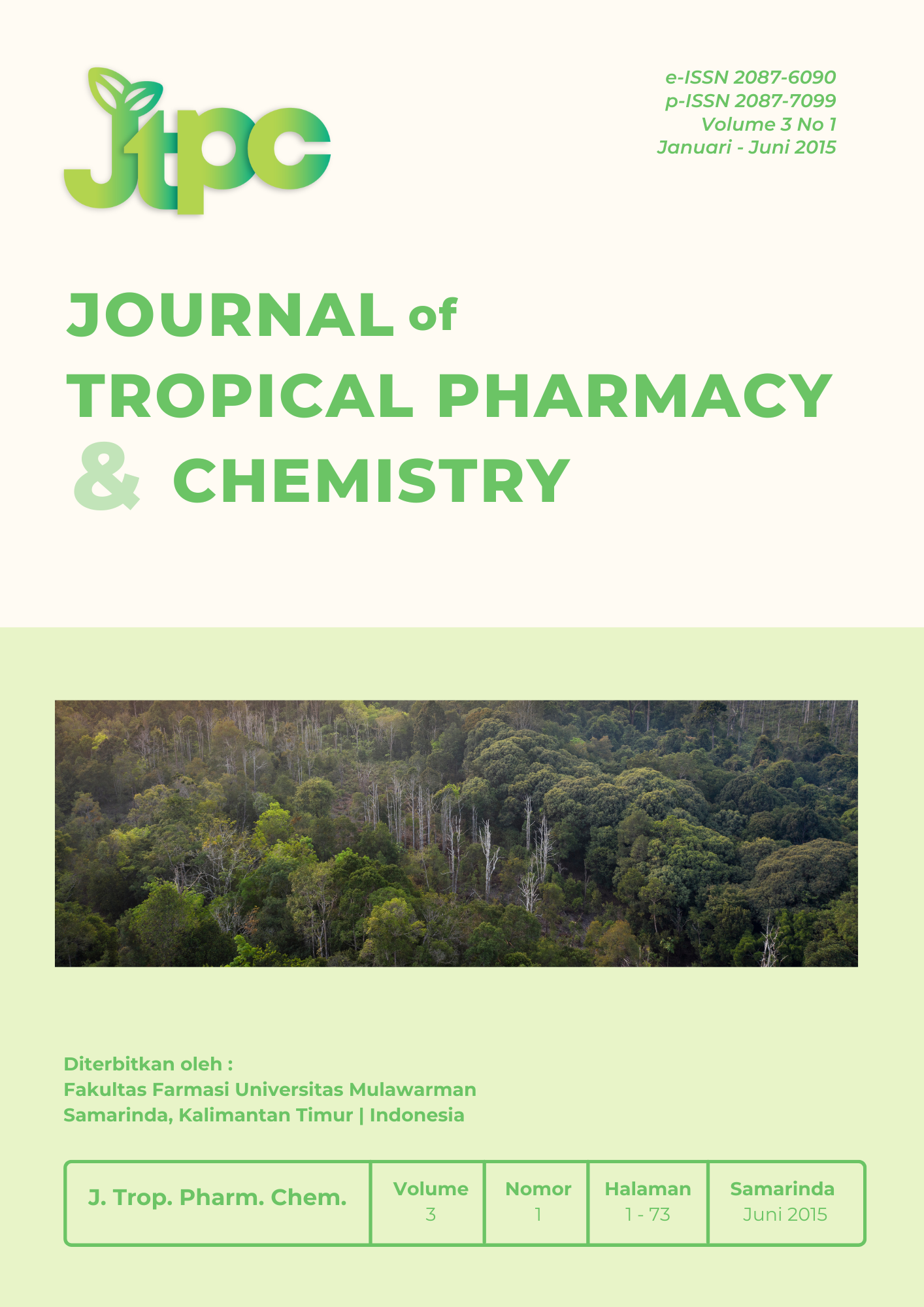Pengurangan Kadar CO2 Menggunakan Spirulina Platensis dalam Tubular Bioreactor
Keywords:
Spirulina platensis, a vertical tubular bioreactor, CO 2 reductionAbstract
Increasing the population impact on increasing energy demand. On the other hand, the energy generation industry has been blamed as one of the contributors of carbon dioxide about 25% of total CO2 emissions worldwide. Meanwhile, the production of biogas, which aims to address the increasing need of energy, produces carbon dioxide in the range of 25–50% by volume. To overcome this, a cheap method, optimum and efficient as well as environmentally friendly in reducing CO2 levels by using Spirulina platensis is needed. This research aims to created a mathematical models and found the optimum flow rate to reduced levels of CO2 by using Spirulina platensis. This study used a glass tubular bioreactor (D = 2.6 cm) at a temperature of 30°C and irradiated with a fluorescent lamp Philips TL 36 Watt, color temperature: 6,200K cool daylight, light output: 2,600 lm, 72 lm/W. Tubular reactor was placed in a box lined with silver foil walls on three sides. With mathematical models of tubular reactor, the reaction rate constants could be predicted. Based on calculations of data and graphs, optimum volumetric velocity could also be predicted. Variation of flowrate to observed the reduction rate of CO2 was 0.25 mL/sec, 0.35 mL/sec, 0.5 mL/sec, 0.75 mL/sec, 1 mL/sec. Carbon source was 99.99% CO2.Observations of Spirulina growth was made on the flow rate of 0.25 mL/sec at the initial levels of dry weight 2.1208 g/L. The results of this study indicated that the low flowratewas a more effective way to reduced carbon dioxide levels using Spirulina platensis (= 2.82×10-4 sec-1). The highest conversion was obtained at a volumetric flow rate of 0.25 mL/sec and optimum speeds in the range of 0.3 to 0.4 mL/sec. The rate of incoming CO2 flux should be less than 0.047 mL/cm2.detik. Specific Growth Rate (µ) of Spirulina platensis in this study was 2.56×10-2 minute-1.
Downloads
References
1.Fedor, K. (2011, 10 30). Arthrospira platensis. Bio203.University of Wisconsin-La Crosse.
2.Kelvinsong. (2013, 01 23). File:Cyanobacterium-inline.svg. Dipetik 04 10, 2014, dari Wikimedia Commons:http://commons.wikimedia.org/wiki/File:Cyanobacterium-inline.svg
3.Mohanty, P., Srivastava, M., & Krishna, K. B. (2002). The Photosynthetic Apparatus of Spirulina: Electron Transport and
Energy Transfer. In A. Vonshak (Ed.), Spirulina platensis (Arthrospira):
Physiology, Cell-biology and Biotechnology.Taylor & Francis.
4.Taiz, L., & Zeiger, E. (2002). Plant Physiology(3rd ed.). Sunderland: Sinauer Associates.
5.Tomaselli, L. (2002). Morphology, Ultrastructure and Taxonomy of Arthrospira (Spirulina) maxima and Arthrospira (Spirulina) platensis.
Dalam A. Vonshak (Penyunt.), Spirulina platensis (Arthrospira):
Physiology, Cell-biology and Biotechnology.Taylor & Francis e-Library.
6.Torzillo, G., Giovanetti, L., Bocci, F., & Materassi,R. (1984). Effect of
oxygen concentration on the protein content of Spirulina biomass. Biotechnol. Bioeng, 26, 1134.
7.Vonshak, A. (2002). Spirulina: Growth, Physiology and Biochemistry. In A. Vonshak (Ed.), Spirulina platensis (Arthrospira): Physiology, Cell-biology and Biotechnology.Taylor & Francis e-Library.




